Answered step by step
Verified Expert Solution
Question
1 Approved Answer
urgent needed BUSI 225: Strategic Management - Winter Term 2021 Case #6: Proctor & Gamble Case Questions: 1. Assess leadership at Proctor & Gamble. a.
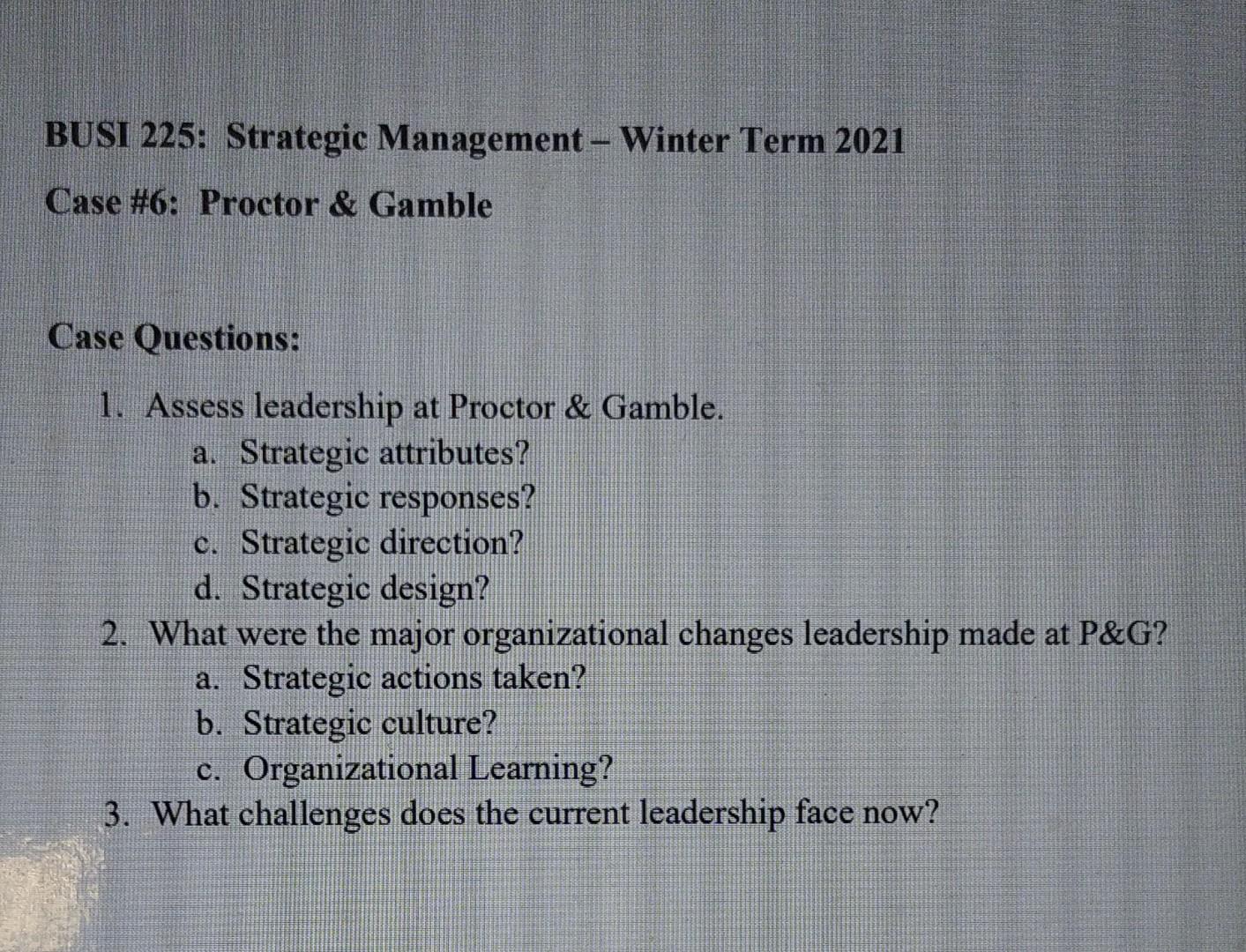
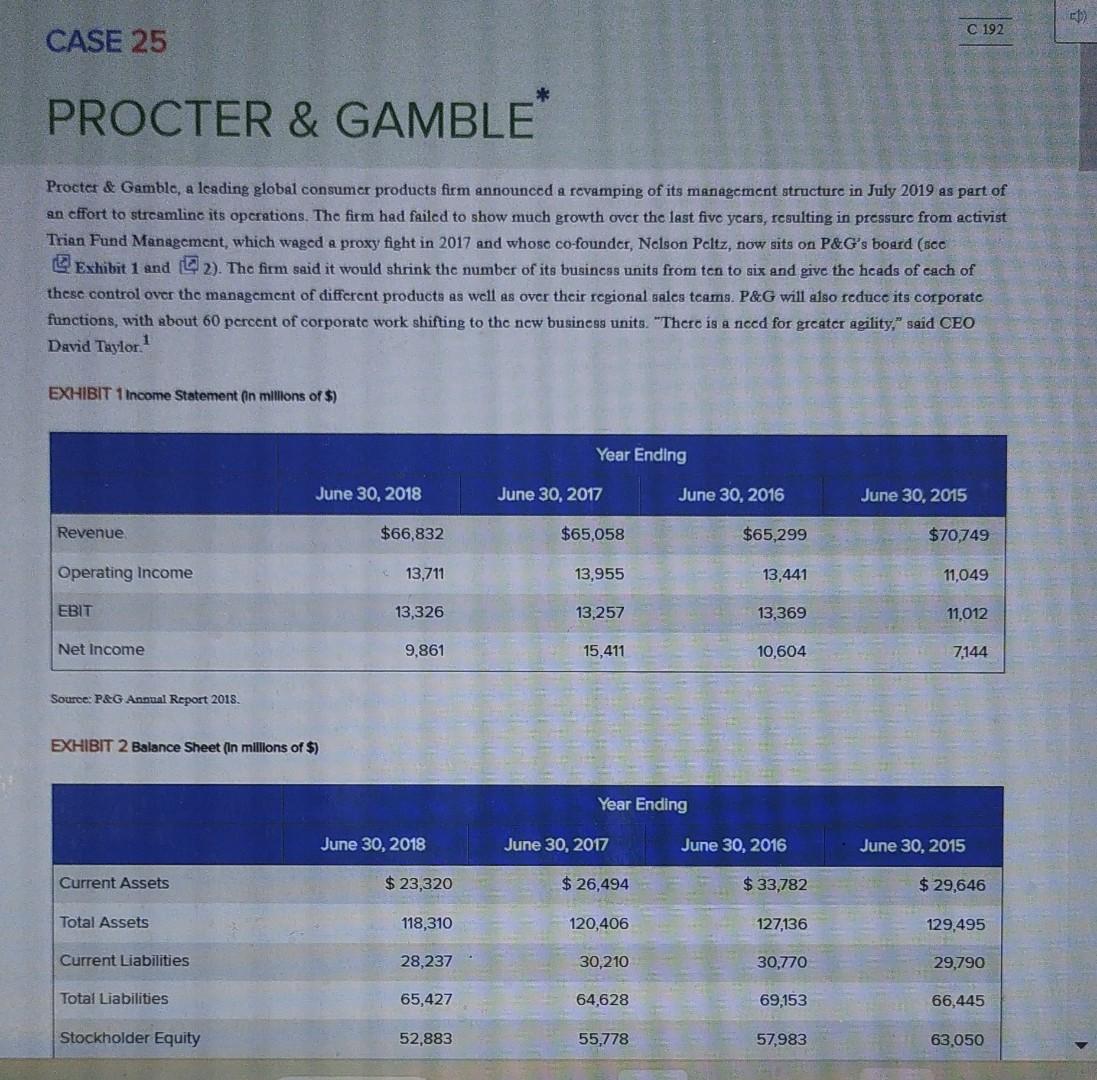
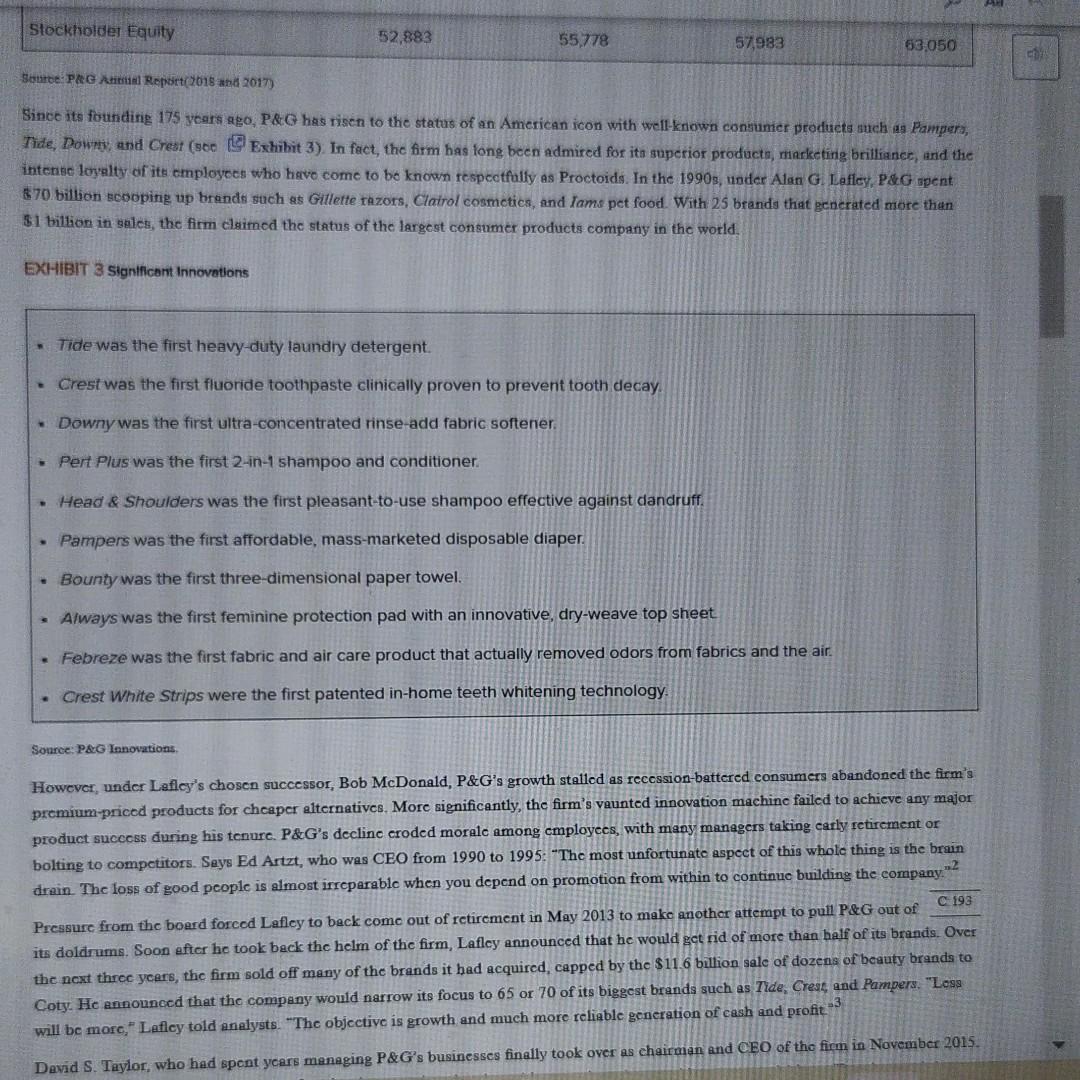
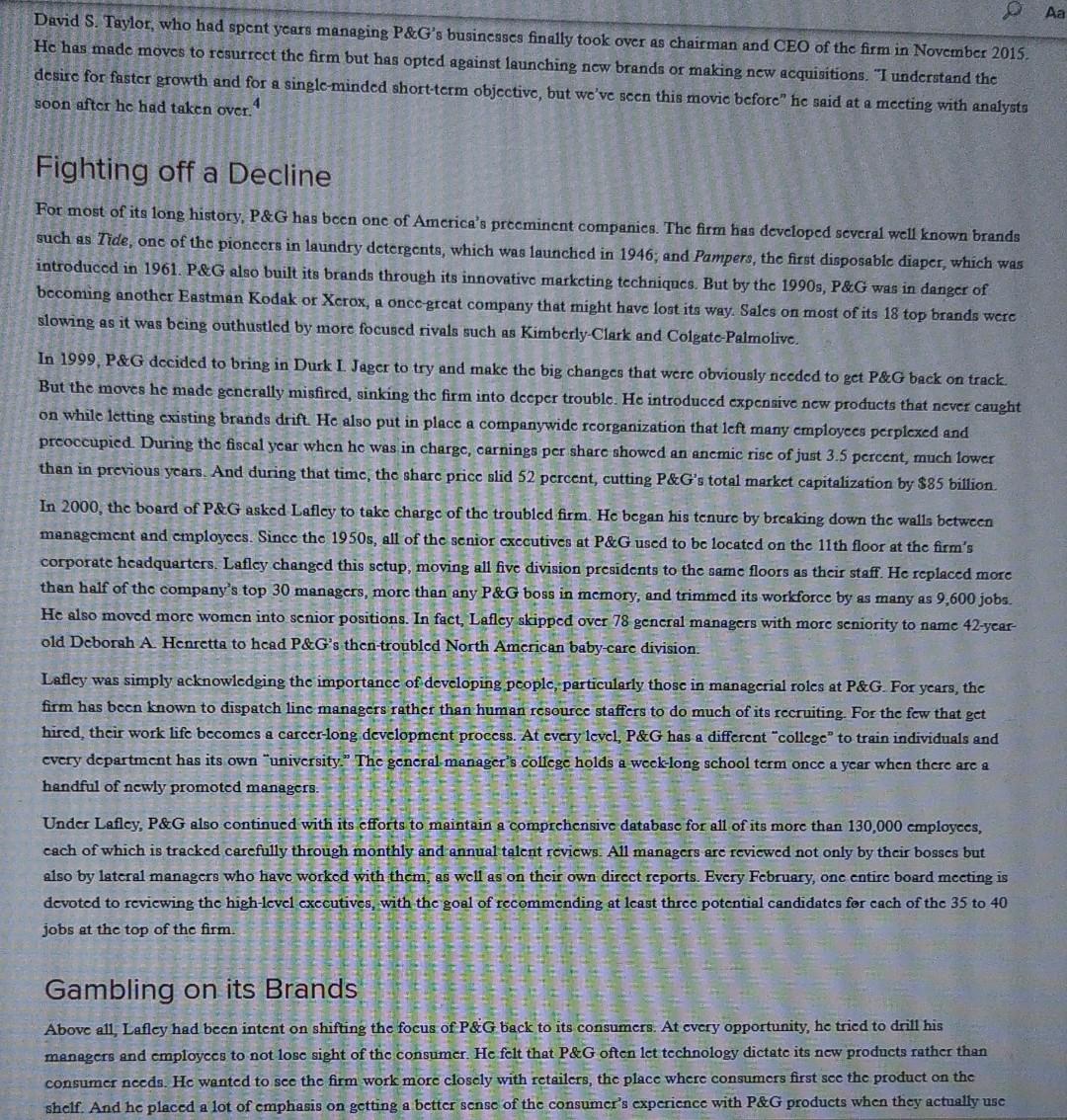
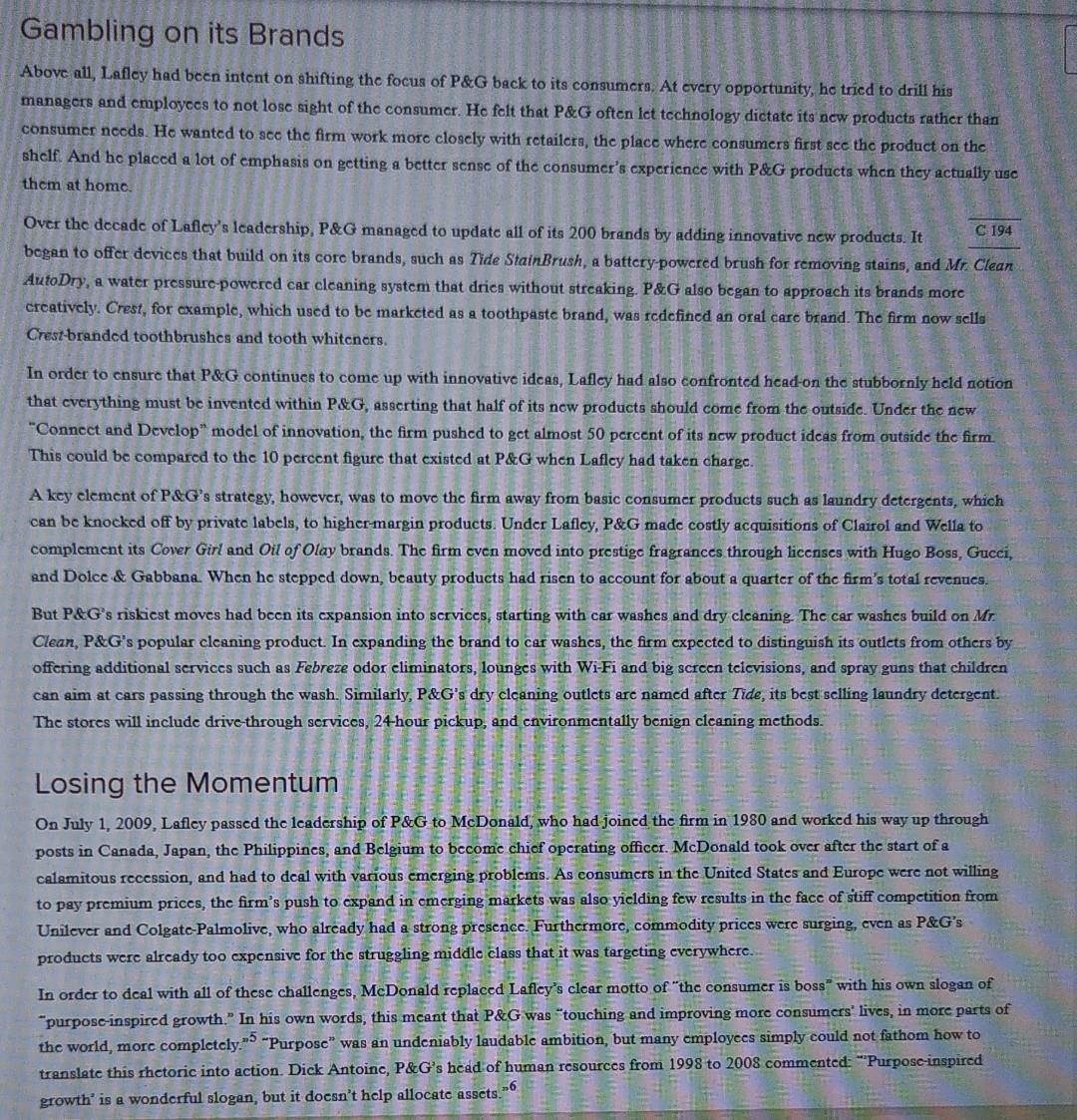
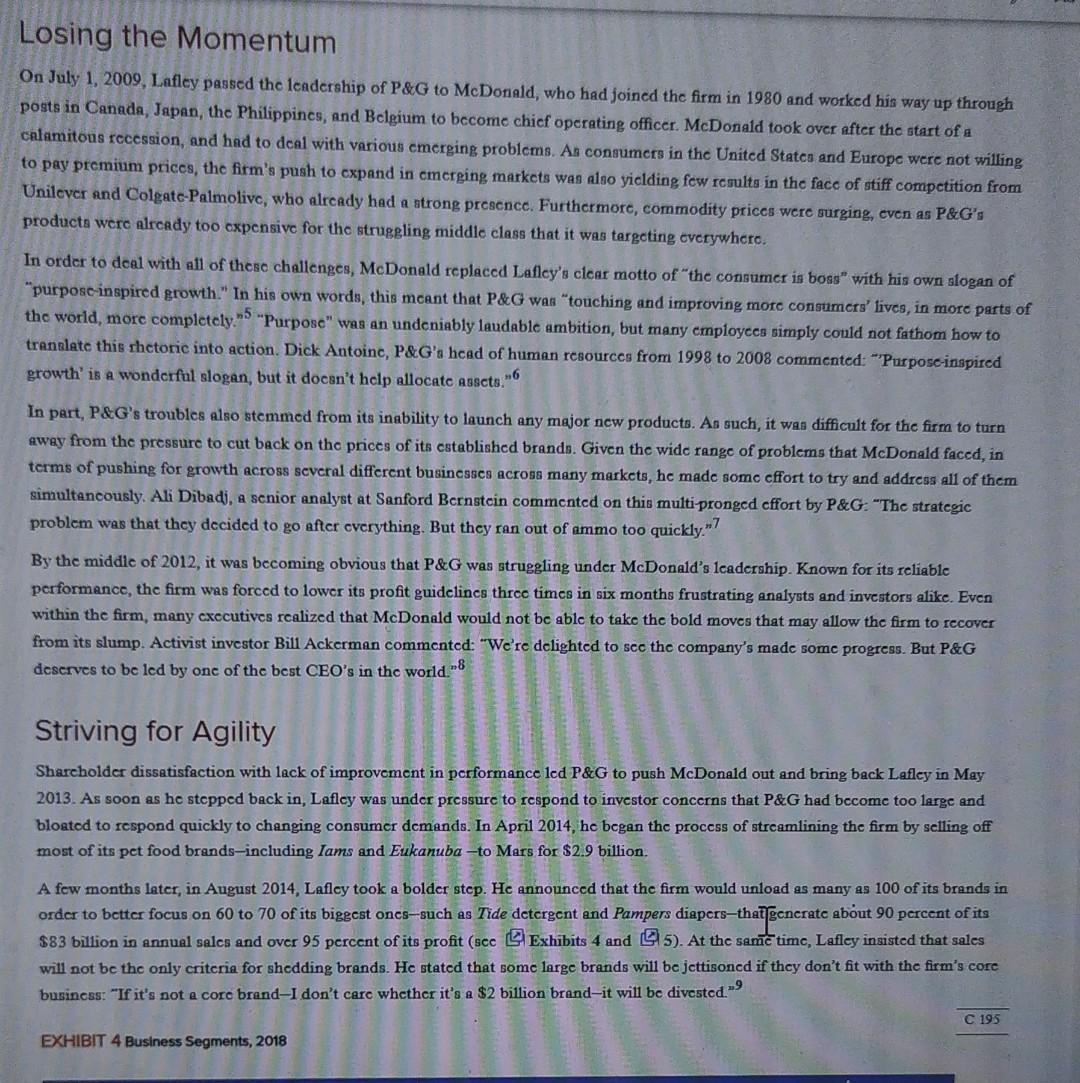

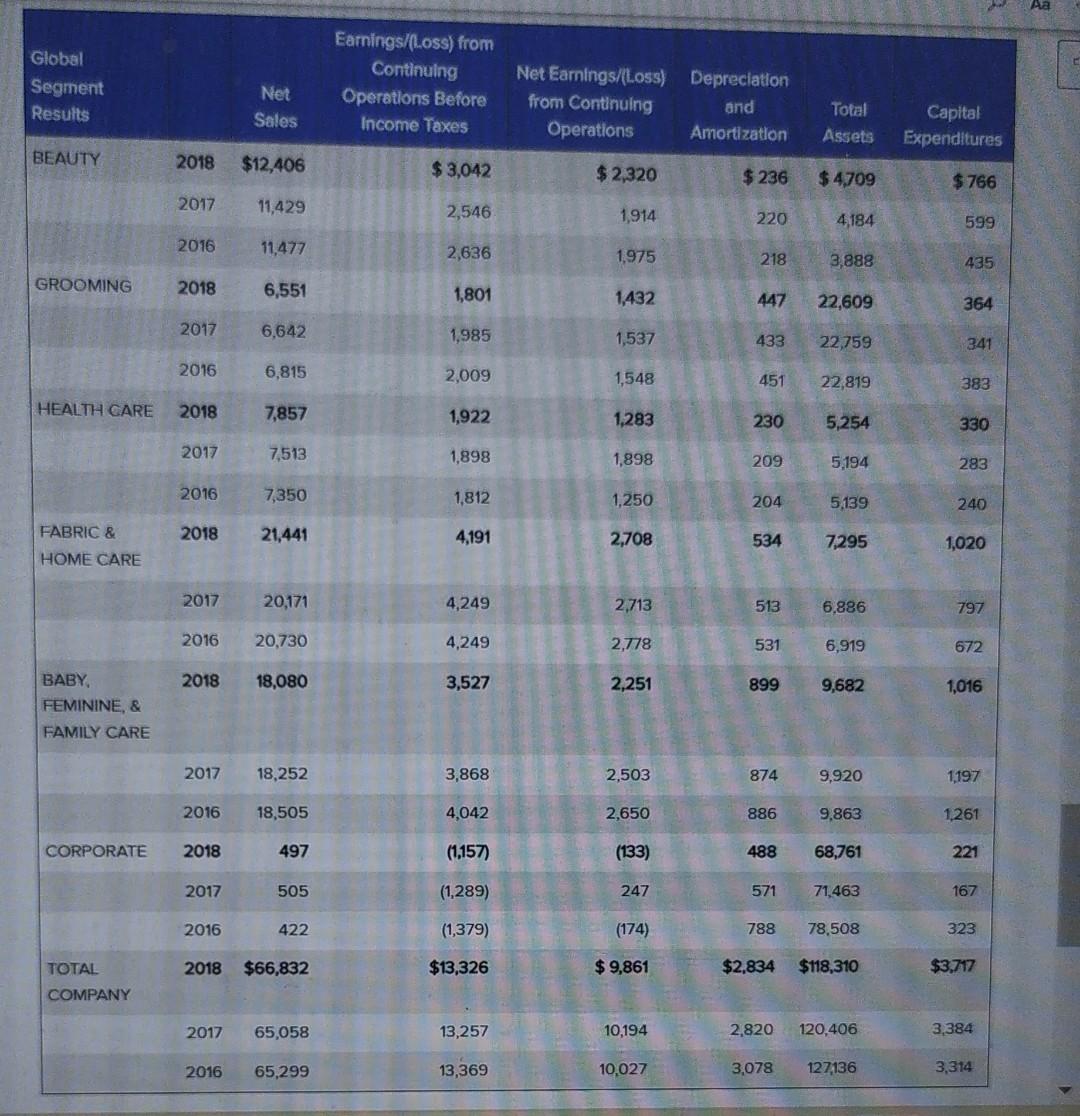

urgent needed
BUSI 225: Strategic Management - Winter Term 2021 Case \#6: Proctor \& Gamble Case Questions: 1. Assess leadership at Proctor \& Gamble. a. Strategic attributes? b. Strategic responses? c. Strategic direction? d. Strategic design? 2. What were the major organizational changes leadership made at P&G ? a. Strategic actions taken? b. Strategic culture? c. Organizational Learning? 3. What challenges does the current leadership face now? Procter \& Gamble, a leading global consumer products firm announced a revamping of its management structure in July 2019 as part of an effort to streamline its operations. The firm had failed to show much growth over the last five years, resulting in pressure from activist Trian Fund Mansgement, which waged a proxy fight in 2017 and whose co-founder, Nolson Peltz, now sits on P\&G's board (see (1) Exhibit 1 and (1). The firm said it would shrink the number of its business units from ten to six and give the heads of each of these control over the management of different products as well as over their regional sales teams. P\&G will also reduce its corporate functions, with about 60 percent of corporate work shifting to the new business units. "There is a need for greater agility," said CEO David Taylor: 1 EXHIBIT 1 Income Statement (in millions of \$) Source: PEG Annual Report 2018. EXHIBIT 2 Bslance Sheet (In millions of \$) Seurce: PkQ Atirial Ropbrt (Y018 and 2017 ) Since its foundirie 175 years ago, PRG has risen to the status of an American icon with well known consumer products auch as Pampers, Tide, Dowmy, and Grest ( 800 (?) Bshibit 3). In fact, the firm has long becn admired for ita superior products, marketing brilliance, and the intenie loyalty af its employecs who havo come to be known respectfulfy as Proctoids. In the 1990s, under Alan G. Lafley, P\& G apent 670.bilion scooping up brande such as Gillette tazors, Clairol cosmctics, and lams pet food. With 25 brands that generated more than 51 bilion in sales, the firm claimed the status of the largest consumer products company in the world ExI-IBIT 3 Significant Innovations - Tide was the first heavy-duty laundry detergent. - Crest was the first fluoride toothpaste clinically proven to prevent tooth decay. - Downy was the first ultra-concentrated rinse-add fabric softener. - Pert Plus was the first 2 in-1 shampoo and conditioner. - Head \& Shoulders was the first pleasant-to-use shampoo effective against dandruff. - Pampers was the first affordable, mass-marketed disposable diaper. - Bounty was the first three-dimensional paper towel. - Always was the first feminine protection pad with an innovative, dry-weave top sheet - Febreze was the first fabric and air care product that actually removed odors from fabrics and the air. - Crest White Strips were the first patented in-home teeth whitening technology. Sonree: P8G Innovations. However, under Lafley's chosen successor, Bob McDonald, P\&G's growth stallod as recession-battered consumers abandoned the firm's premium-pricod products for cheaper alternatives, More significantly, the firm's vaunted innovation machine failed to achieve any major product success during his tenure. P\&G's decline eroded morale among cmployees, with many managers taking carly retirement or bolting to competitors. Seys Ed Artzt, who was CEO from 1990 to 1995: "The most unfortunate aspect of this whole thing is the brain drain. The loss of good people is almost irreparable when you depend on promotion from within to continue building the company." 2 Pressure from the board forced Lafley to beck come out of retirement in May 2013 to make another attempt to pull P\&G out of its doldrums. Soon after he took back the helm of the firm, Lafley announced that he would get rid of more than balf of its brands. Over the next three years, the firm sold off many of the brands it had acquired, capped by the $11.6 billion sale of dozens of beauty brands to Coty. He announced that the company would narrow its focus to 65 or 70 of its biggest brands such as Tide, Crest, and Pampers. Loss will be morc," Lafley told analysts. "The objective is growth and much more reliable generation of cash and pfofit 3 Devid S. Taylor, who had spent ycars menaging P\&G's businesses finally took over as chairman and CEO of the firm in November 2015 . David S. Taylor, who had spent years managing P\&G's businesses finally took over as chairman and CEO of the firm in November 2015 . He has made moves to resurrect the firm but has opted against launching new brands or making new acquisitions. "I understand the desire for faster growth and for a single-minded short-term objective, but wo've scen this movic before" he said at a mecting with analysts soon after he had taken over. Fighting off a Decline For most of its long history, P\&G has becn one of Amcrica's precminent companies. The firm has developed several well known brands such as Tide, one of the pionecrs in laundry detergents, which was launched in 1946 ; and Pampers, the first disposable diaper, which was introduced in 1961. P\&G also built its brands through its innovative marketing techniques. But by the 1990 s, P\&G was in danger of becoming another Eastman Kodak or Xerox, a once-great company that might have lost its way. Sales on most of its 18 top brands were slowing as it was bcing outhustled by more focused rivals such as Kimberly-Clark and Colgate-Palmolive. In 1999, P\&G decided to bring in Durk I Jager to try and make the big changes that were obviously necded to get P\&G back on track. But the moves he made generally misfired, sinking the firm into deeper trouble. He introduced expensive new products that never caught on while letting existing brands drift. He also put in place a companywide rcorganization that left many employees perplexed and preoccupied. During the fiscal year when he was in charge, earnings per share showed an anemic rise of just 3.5 percent, much lower than in previous ycars. And during that time, the share price slid 52 percent, cutting P\&G's total market capitalization by $85 billion. In 2000, the board of PEG asked Lafley to take charge of the troubled firm. He began his tenure by breaking down the walls between management and employecs. Since the 1950 s, all of the senior executives at P\&G used to be located on the 11 th floor at the firm's corporate headquarters. Lafley changed this setup, moving all five division presidents to the same floors as their staff. He replaced more than half of the company's top 30 managers, more than any P\&G boss in memory, and trimmed its workforce by as many as 9,600 jobs. He also moved more women into senior positions. In fact, Lafley skipped over 78 general managers with more seniority to name 42 -yearold Deborah A. Henretta to head P\&G's then-troubled North American baby-care division. Lafley was simply acknowledging the importance of developing people, particularly those in managerial roles at P\&G. For years, the firm has been known to dispatch line managers rather than human resource staffers to do much of its recruiting. For the few that get hired, their work life becomes a career-long development process. At every level, P\&G has a different "college" to train individuals and every department has its own "university." The general manager's college holds a week-long school term once a year when there are a handful of newly promoted managers. Under Lafley, P\&G also continued with its efforts to maintain a comprehensive database for all of its more than 130,000 employees, cach of which is tracked carefully through monthly and annual talent reviews. All managers are revicwed not only by their bosses but also by lateral managers who have worked with them, as well as on their own direct reports. Every February, one entire board mecting is devoted to reviewing the high-level executives, with the goal of recommending at least three potential candidates for each of the 35 to 40 jobs at the top of the firm. Gambling on its Brands Above all, Lafley had been intent on shifting the focus of P\&G back to its consumers. At every opportunity, he tried to drill his managers and employees to not lose sight of the consumer. He folt that P\&G often let technology dictate its new products rather than consumer needs. He wanted to see the firm work more closely with retailers, the place where consumers first see the product on the shelf. And he placed a lot of emphasis on getting a better sense of the consumer's experience with P\&G products when they actually use Above all, Lafley had becn intent on shifting the focus of P\&G back to its consumera. At every opportunity, he tricd to drill his managers and cmployces to not lose sight of the consumer. Ho folt that P\&G often lot technology dictate its new products rather than consumer necds. He wanted to see the firm work more closely with retailers, the place where consumers first see the product on the shelf. And he placed a lot of emphasis on getting a better sense of the consumer's experience with P\&G products when they actually use them at home. Over the decade of Lafley's leadership, P\&G managed to update all of its 200 brands by adding innovative new products. It bogan to offer devices that build on its core brands, such as Tide StainBrush, a batterypowered brush for removing stains, and Mr. Clean AutoDry, a water pressure-powcred car cleaning system that drics without streaking. P\&G also began to approach its brands more creatively. Crest, for cxample, which used to be marketed as a toothpaste brand, was redefined an oral care brand. The firm now sells Crest-brandod toothbrushes and tooth whiteners. In order to ensure that P\&G continues to come up with innovative ideas, Lafley had also confronted head-on the stubbornly held notion that everything must be invented within P\&G, asserting that half of its new products should come from the outside. Under the new "Connect and Develop" model of innovation, the firm pushed to get almost 50 percent of its new product ideas from outside the firm. This could be compared to the 10 percent figure that existed at P\&G when Lafley had taken charge. A key element of PEG's strategy, however, was to movo the firm away from basic consumer products such as laundry detergents, which can be knocked off by private labels, to higher-margin products. Under Lafley, P\&G made costly acquisitions of Clairol and Wella to complement its Cover Girl and Oil of Olay brands. The firm even moved into prestige fragrances through licenses with Hugo Boss, Gucei, and Dolce \& Gabbana. When he stepped down, beauty products had riscn to account for about a quarter of the firm's total revenues. But PEG's riskiest moves had been its expansion into services, starting with car washes and dry cleaning. The car washes build on Mr. Clean, P\&G's popular cleaning product. In expanding the brand to car washes, the firm expected to distinguish its outlets from others by offering additional services such as Febreze odor eliminators, lounges with Wi-Fi and big screen teicvisions, and spray guns that children can aim at cars passing through the wash. Similarly, P\&G's dry cleaning outlets are named after Tide, its best selling laundry detergent. The stores will include drive-through services, 24-hour pickup, and environmentally benign cleaning methods. Losing the Momentum On July 1, 2009, Lafley passed the leadership of P\&G to McDonald, who had joined the firm in 1980 and worked his way up through posts in Canada, Japan, the Philippines, and Belgium to become chiof operating officer. McDonald took over after the start of a calamitous recession, and had to deal with various emerging problems. As consumers in the United States and Europe were not willing to pay premium prices, the firm's push to expand in emerging markets was also yielding few results in the face of stiff competition from Unilever and Colgate-Palmolive, who already had a strong presence. Furthermore, commodity prices were surging, even as P\&G's products were already too expensive for the struggling middle class that it was targeting everywhere. In order to deal with all of these challenges, McDonald replaced Lafley's clear motto of "the consumer is boss" with his own slogan of "purpose-inspired growth." In his own words, this meant that P\&G was "touching and improving more consumers' lives, in more parts of the world, more completely." "Purpose" was an undeniably laudable ambition, but many employees simply could not fathom how to translate this thetoric into action. Dick Antoinc, P\&G's head of human resources from 1998 to 2008 commented: "Purposeinspired growth' is a wonderful slogan, but it docsn't help allocate assets.. On July 1, 2009, Lafley passed the leadership of P\&G to McDonald, who had Joined the firm in 1980 and worked his way up through posts in Canada, Japan, the Philippines, and Belgium to become chicf operating officer. McDonald took over after the start of a calamitous recession, and had to deal with various emerging problems. As consumers in the United States and Europe were not willing to pay premium prices, the firm's push to expand in cmerging markets was also yielding few results in the face of stiff competition from Unilever and Colgate-Palmolive, who already had a atrong presence. Furthermore, commodity prices were surging, even as P\&G's products were already too expensive for the struggling middle class that it was targeting everywhere. In order to deal with all of these challenges, McDonald replaced Lafley's clear motto of "the consumer is boss" with his own slogan of "purpose-inspired growth." In his own words, this meant that P\&G was "touching and improving more consumers' lives, in more parts of the world, more completely." "Purpose" was an undeniably laudable ambition, but many employees simply could not fathom how to translate this rhetoric into action. Dick Antoinc, P\&G's head of human resources from 1998 to 2008 commented: 'Purpose-inspired growth' is a wonderful slogan, but it docsn't help allocate assets., 6 In part, P\&G's troubles also stemmed from its inability to launch any major new products. As such, it was difficult for the firm to turn away from the pressure to cut back on the prices of its cstablished brands. Given the wide range of problems that McDonald faced, in terms of pushing for growth across several different businesses across many markets, he made some effort to try and address all of them simultancously. Ali Dibadj, a senior analyst at Sanford Bernstein commented on this multipronged effort by P\&G: "The strategic problem was that they decided to go after everything. But they ran out of ammo too quickly."7 By the middie of 2012, it was becoming obvious that P\&G was struggling under McDonald's leadership. Known for its reliable performance, the firm was forced to lower its profit guidelines three times in six months frustrating analysts and investors alike. Even within the firm, many executives realized that McDonald would not be able to take the bold moves that may allow the firm to recover from its slump. Activist investor Bill Ackerman commented: "We're delighted to sec the company's made some progress. But P\&G deserves to be led by one of the best CEO's in the world. 88 Striving for Agility Shareholder dissatisfaction with lack of improvement in performance led P\&G to push McDonald out and bring back Lafley in May 2013. As soon as he stepped back in, Lafley was under pressure to respond to investor concerns that P\&G had become too large and bloatod to respond quickly to changing consumer demands. In April 2014, he began the process of streamlining the firm by selling off most of its pet food brands-including Iams and Eukanuba -to Mars for $2.9 billion. A few months later, in August 2014, Lafley took a bolder step. He announced that the firm would unload as many as 100 of its brands in order to better focus on 60 to 70 of its biggest ones-such as Tide detergent and Pampers diapers-that generate about 90 percent of its $83 billion in annual sales and over 95 percent of its profit (see [4 Exhibits 4 and (\$1 5). At the same time, Lafley insisted that sales will not be the only criteria for shedding brands. He stated that some large brands will be jettisoned if they don't fit with the firm's core business: "If it's not a core brand-I don't care whether it's a $2 billion brand-it will be divested.." EXHIBIT 4 Business Segments, 2018 Striving for Agility Sharcholder dissatisfaction with lack of improvement in performance led P\&G to push McDonald out and bring back Lafley in May 2013. As soon as he stepped back in, Lafley was under pressure to respond to investor concerns that P\& G had become too large and bloated to respond quickly to changing consumer demands. In April 2014, he began the process of streamlining the firm by selling off most of its pet food brands-including Iams and Eukanuba -to Mars for $2.9 billion. A few months later, in August 2014, Lafley took a bolder step. He announced that the firm would unload as many as 100 of its brands in order to better focus on 60 to 70 of its biggest ones-such as Tide detergent and Pampers diapers-that generate about 90 percent of its $83 billion in annual sales and over 95 percent of its profit (sec G Exhibits 4 and (G 5). At the same time, Lafley insisted that sales will not be the only criteria for shedding brands. He stated that some large brands will be jettisoned if they don't fit with the firm's core business: "If it's not a core brand-I don't care whether it's a $2 billion brand-it will be divested. EXHIBIT 4 Business Segments, 2018 EXHIBIT 5 Financlal Breakdown 2018 Sourct: PeG Annual Roport 2018. Although analysts were roceptive to the reduction of brands, they pointed out that P\&cG has alrcady sold off more than 30 cstablished brands over tho past 15 ycars that were supposedly hindering growth. Many of thesc sold-off brands have been performing well with other firms. J.M. Smucker, for cxample, that bought Crisco shottening. Foigers coffec, and Jlf peanut butter, has had 50 percent sales growth sinco 2009. Some critics charge that P\&G, which was once was most successful in building and managing brands, has lost its touch. In large part, the focus is on the cumbersome centralized and burcaucratic structure that has developed at P\& G. Unlike many of its newer competitors, the firm still tends to rely less on working with outside partners. The Connect and Develop program that had becn startod by Lafley to bring in new idcas from outsiders has led to 50 pcrcent of its new technologics coming from outside, but these are then reworked or modificd by P\&G's internal R\&D group. This has stifled innovation, with most of the firm's growth coming from line extensions of existing brands or from costly acquisitions. On November 1, 2015, Lafley stepped down, passing the reins to David Taylor, who had built his career at P\&G. He had most recently becn assignod to take over the firm's struggling beauty unit. Taylor continucd with Lafley's strategy of cutting back on P\&G's brands. The sale of 43 of the firm's beauty brands to Coty in a $12 billion deal was completed in October 2016 . A few months carlier, P\&G had completed the transfer of Duracell to Berkshire Hathaway through an exchango of shares. Fighting for Its lconic Status Under Taylor, P\&G has becn trying to find ways to revive the prospects of its mostly aging brands. For years, P\&G had spent heavily to build on its success with legacy soap and detergent brands to acquire hundreds of additional brands in new businesses that it hoped could also bocome part of consumers' daily routines. The latest effort to jettison over half of its brands indicated that the strategy was not woriking anymore. In particular, P\&G has becn struggling with its push to place more cmphasis on products that carry higher margins in order to move it away from its dependence on houschold staples. Above all, it is clear that the recent push to expand into new categories with acquired brands did not produce the desired results. The firm's aggressive push into beauty, for example, has struggled to show much growth. Lafley had tried to build the firm's prescnce in this business for years, regarding it as a high margin, faster growing complement to the firm's core houschold products. The firm has struggled to show growth in this business and it has been gencrating the lowest profit margins. Sales of Olay skin care products and Pantene hair care products have mostly sagged in recent years. Its efforts to build a line of perfumes around licenses with Dolce \& Gabbana, Gucci, and Hugo Boss were also running into problems. Analysts are hoping that the decision to restructure P\&G will address long-standing problems that the firm has been facing. The 196 new organization will give more responsibility for its different product categories to scparate business units, giving them control over their sales for the largest 10 geographic markets, including the United States, China, Russia, and Germany-Such a push for decentralization would give these units more freedom to adjust their strategies to the needs of the different product categories in each of the markets. "We are accelerating the pace of change and stepping up execution to meet the challenges of today's dynamic world," said Teylor 10Step by Step Solution
There are 3 Steps involved in it
Step: 1

Get Instant Access to Expert-Tailored Solutions
See step-by-step solutions with expert insights and AI powered tools for academic success
Step: 2

Step: 3

Ace Your Homework with AI
Get the answers you need in no time with our AI-driven, step-by-step assistance
Get Started


